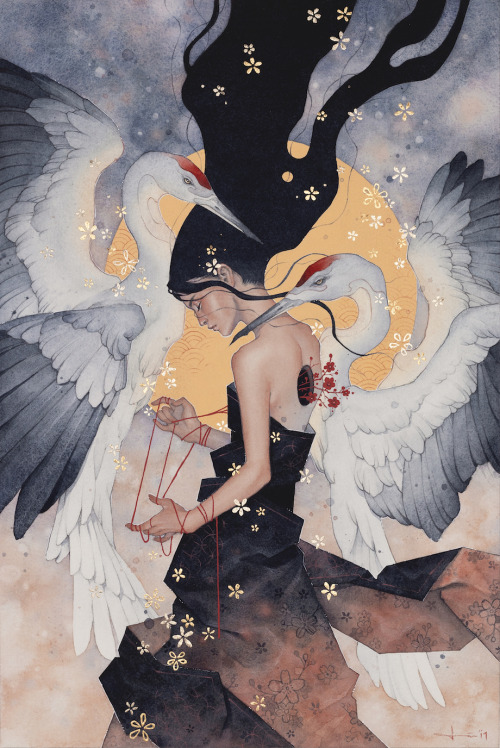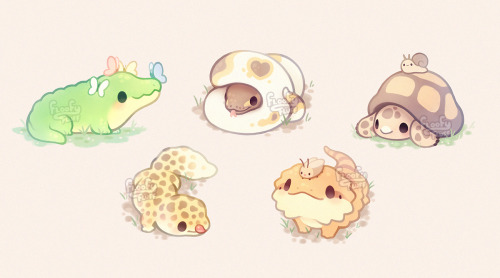The Weaver

The Weaver
prints | tutorials
More Posts from Mystarypi and Others


It’s reptile hours

This is the Gabriela Mistral Nebula! 💫💫💫
Gabriela Mistral is a Chilean poet who was the first Latin American author to win a Nobel Prize in Literature. This nebula has her name because some believe that it resembles her (I honestly don’t know why 😂). Millions of years ago, a deposit of gas resulted in a surge of star formation that heats up and radiates this region today! ✨✨✨
Taken by me (Michelle Park) using the Slooh Chile Two telescope on January 13th, 2021 at 5:17 UTC.







This is the Statue of Liberty Nebula! 🗽🗽🗽 (I guess to celebrate the inauguration!)
The dramatic shapes of the nebula are created by young, hot stars that were newly formed through this nebula. Most of the star formation takes place in the dark filaments in this region and it is located just a few thousand light years away from the famous Eta Carinae Nebula (also a prolific star forming region)! ✨✨✨
Taken by me (Michelle Park) using the Slooh Chile Two telescope on January 18th, 2021 at 5:12 UTC.

One of the most difficult collections ever: the Caldwell object collection! ♥♥♥
Taking around 6 months to complete, this was one of the longest collections ever! Many of these objects could be photographed during specific times of the year so I often had to wait months before I could take a picture. 🎇🎆🌌✨💫
Taken by me (Michelle Park) using the Slooh telescopes!


🌸 my first time bullet journaling! This was done a while ago! Also this is my first post on tumblr💕 🌸
IG: @_akadanie

2022 May 15
Colors of the Moon Image Credit & Copyright: Marcella Giulia Pace
Explanation: What color is the Moon? It depends on the night. Outside of the Earth’s atmosphere, the dark Moon, which shines by reflected sunlight, appears a magnificently brown-tinged gray. Viewed from inside the Earth’s atmosphere, though, the moon can appear quite different. The featured image highlights a collection of apparent colors of the full moon documented by one astrophotographer over 10 years from different locations across Italy. A red or yellow colored moon usually indicates a moon seen near the horizon. There, some of the blue light has been scattered away by a long path through the Earth’s atmosphere, sometimes laden with fine dust. A blue-colored moon is more rare and can indicate a moon seen through an atmosphere carrying larger dust particles. What created the purple moon is unclear – it may be a combination of several effects. The last image captures the total lunar eclipse of 2018 July – where the moon, in Earth’s shadow, appeared a faint red – due to light refracted through air around the Earth. Today there is not only another full moon but a total lunar eclipse visible to observers in North and South America – an occurrence that may lead to some unexpected lunar colorings.
∞ Source: apod.nasa.gov/apod/ap220515.html

Released
-
 pennyl4n3 liked this · 2 months ago
pennyl4n3 liked this · 2 months ago -
 himejoshi-homosexual reblogged this · 3 months ago
himejoshi-homosexual reblogged this · 3 months ago -
 aaadavis liked this · 4 months ago
aaadavis liked this · 4 months ago -
 deathdefyinglifeleaps reblogged this · 4 months ago
deathdefyinglifeleaps reblogged this · 4 months ago -
 skeletonize-freak reblogged this · 8 months ago
skeletonize-freak reblogged this · 8 months ago -
 fittbo liked this · 9 months ago
fittbo liked this · 9 months ago -
 seaglass-skies liked this · 9 months ago
seaglass-skies liked this · 9 months ago -
 glowstick-blood liked this · 9 months ago
glowstick-blood liked this · 9 months ago -
 jackdaw-sprite reblogged this · 9 months ago
jackdaw-sprite reblogged this · 9 months ago -
 monicavillalbarojo liked this · 9 months ago
monicavillalbarojo liked this · 9 months ago -
 boatsbeatson reblogged this · 10 months ago
boatsbeatson reblogged this · 10 months ago -
 boatsbeatson liked this · 10 months ago
boatsbeatson liked this · 10 months ago -
 novellinasu reblogged this · 10 months ago
novellinasu reblogged this · 10 months ago -
 potetosaradas reblogged this · 10 months ago
potetosaradas reblogged this · 10 months ago -
 northofnow reblogged this · 11 months ago
northofnow reblogged this · 11 months ago -
 holydance333 liked this · 1 year ago
holydance333 liked this · 1 year ago -
 flawediamond reblogged this · 1 year ago
flawediamond reblogged this · 1 year ago -
 mytendercenter liked this · 1 year ago
mytendercenter liked this · 1 year ago -
 moosedrawsalot liked this · 1 year ago
moosedrawsalot liked this · 1 year ago -
 dragongirlsheathpics liked this · 1 year ago
dragongirlsheathpics liked this · 1 year ago -
 qu1cksylver liked this · 1 year ago
qu1cksylver liked this · 1 year ago -
 pelgraine reblogged this · 1 year ago
pelgraine reblogged this · 1 year ago -
 rivianrudolf reblogged this · 1 year ago
rivianrudolf reblogged this · 1 year ago -
 rivianrudolf liked this · 1 year ago
rivianrudolf liked this · 1 year ago -
 tinkerclaw liked this · 1 year ago
tinkerclaw liked this · 1 year ago -
 ninjanaomi reblogged this · 1 year ago
ninjanaomi reblogged this · 1 year ago -
 raiasintended reblogged this · 1 year ago
raiasintended reblogged this · 1 year ago -
 queerdaydreamz reblogged this · 1 year ago
queerdaydreamz reblogged this · 1 year ago -
 potetosaradas liked this · 1 year ago
potetosaradas liked this · 1 year ago -
 stars-and-cardigans reblogged this · 1 year ago
stars-and-cardigans reblogged this · 1 year ago -
 marshmellowedout liked this · 1 year ago
marshmellowedout liked this · 1 year ago -
 queerdaydreamz liked this · 1 year ago
queerdaydreamz liked this · 1 year ago -
 lambdalegend liked this · 1 year ago
lambdalegend liked this · 1 year ago -
 eameseames liked this · 1 year ago
eameseames liked this · 1 year ago -
 dealwithityourway reblogged this · 1 year ago
dealwithityourway reblogged this · 1 year ago -
 examishbookwyrm liked this · 1 year ago
examishbookwyrm liked this · 1 year ago -
 sesamui reblogged this · 1 year ago
sesamui reblogged this · 1 year ago -
 lillotte17 reblogged this · 1 year ago
lillotte17 reblogged this · 1 year ago -
 lillotte17 liked this · 1 year ago
lillotte17 liked this · 1 year ago -
 picturefirebreathingreptiles reblogged this · 1 year ago
picturefirebreathingreptiles reblogged this · 1 year ago -
 picturefirebreathingreptiles liked this · 1 year ago
picturefirebreathingreptiles liked this · 1 year ago -
 sylphofstorms reblogged this · 1 year ago
sylphofstorms reblogged this · 1 year ago -
 sylphofstorms liked this · 1 year ago
sylphofstorms liked this · 1 year ago -
 five-rivers liked this · 1 year ago
five-rivers liked this · 1 year ago -
 tiredhobbit reblogged this · 1 year ago
tiredhobbit reblogged this · 1 year ago -
 magpiefaeprince reblogged this · 1 year ago
magpiefaeprince reblogged this · 1 year ago -
 scribblingface liked this · 1 year ago
scribblingface liked this · 1 year ago -
 magpiefaeprince liked this · 1 year ago
magpiefaeprince liked this · 1 year ago
